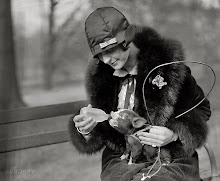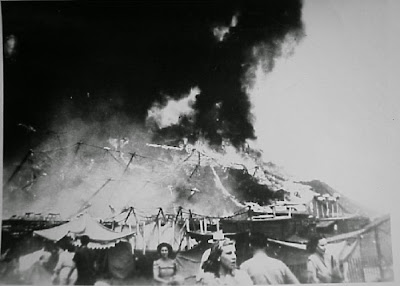Late into the afternoon of July 5th, 1944, members of the traveling Barnum and Bailey circus scrambled to set up in time for their next show. After their trains were delayed arriving in Hartford, they were down one performance, and precious revenue for the fair. It had been a rough few years for the circus following the Great Depression, with most of the country now focused on the war effort. Financial constraints were proving more evident as acts continued to be cut and handlers became inundated with the responsibility to care for twice the number of animals than were previously in their charge. Despite having managed to pull off the second event just in time, the entertainers slept uneasily that night- to the superstitious, missing even one appearance was incredibly bad luck.
On July 6th, Ringling Brothers employees awoke to a deceptively calm summer day. With plenty of time before their afternoon show, the performers took their leisure feeding the animals, practicing acrobatics and securing the big top. Barnum and Bailey were the first circus to utilize large scale tents to house their acts, making them ostentatious pioneers and stand outs among other traveling sideshows. The tents were constructed of canvas and treated with paraffin and kerosene to ensure they would preclude the possibility of show cancellations due to inclement weather. The structures were also required to be treated with a liquid form of asbestos for further protection from fire based sources. John Ringling North, who managed the circus at the time, had applied to the Army for this solvent, as they held a priority surplus of the material. The Army denied the release of the solution to Ringling, however, because the war effort held a greater demand.
With the dwindling income of the institution at the forefront of everyone's minds, the sight of throngs of patrons pouring in to the Big Top that day was a welcome one. As the crowd of over eight thousand took their seats, the Ring Master, Fred Bradna, prepared them for the thrilling, awe inspiring and death defying acts they were about to witness. One of these such acts were the Great Wallendas- a family of acrobats specializing in uninhibited high wire stunts. Halfway through the performance, the band struck up a sudden and hurried rendition of "Stars and Stripes Forever". Panic set in with the performers, who knew the presence of the tune signaled that something was terribly wrong. Merle Evans, the circus' bandmaster had spotted flames and immediately assembled his orchestra to warn the other performers without alarming the crowd. By this time, however, members of the audience had also taken notice of the emerging disaster and begun to panic. Emmett Kelly, the hobo clown, attempted to douse the rising flames with a pail of water, to no avail. Ironically, the material intended to protect the tent from one type of damage, was the same which exacerbated the exothermic reaction of the enclosure.
Master Bradna pleaded with the crowd to remain calm, but it was impossible- the nineteen ton tent was completely engulfed, and collapsing on itself, raining fire and heavy debris on the people inside. May Kovar, the tiger handler, rushed his cat out of the side tunnel, escaping with minor burns. Two additional animal carts, however, blocked the main entrances where men and women clamored to escape. Several of the staff attempted to throw smaller children over the barricades to safety, while other patrons fell under the bleachers and caught fire in the hay below. Hysterical, people ran in circles in the flaming tent searching for loved ones. Spectators trampled over one another, trying to flee the heat, and many asphyxiated, trapped under others who had fallen on top of them. Some even remained seated, immobile and in shock, waiting for the show to continue.
Over 165 people lost their lives that day, the majority of which were children, under the age of 15,and many of whom have never been identified. Another 500 attendees suffered severe burns, smoke inhalation, and broken bones, sustained as a result of crashing steel beams, or after being trampled by their neighbors. The individuals who survived the ordeal, however, were hardly considered lucky, walking away in anguish, and haunted by the scene which unfolded that day.
Although they had previously tried to obtain the chemicals necessary to prevent damage from fire, the lack of safety protocol and poor handling of the emergency resulted in Ringling Brothers being held liable for all injuries and loss of life. Several high ranking members of the circus' management even served jail time for the incident, although none of this was any consolation to the families who lost loved ones in the disaster. For the next ten years of their tour, Ringling set aside all profits to compensate those affected. Performers stayed on board with a sense of duty to bring happiness where they could in the hopes of leaving the tragedy behind. Emmett Kelly, the tramp clown who attempted to put out the fire that fateful afternoon, was never quite able. While his usual act prior to the incident pandered to the sympathies of the audience, fellow employees recounted that he helplessly watched the catastrophe unfold that day, and for the first time since they knew him, he wept.


No comments:
Post a Comment